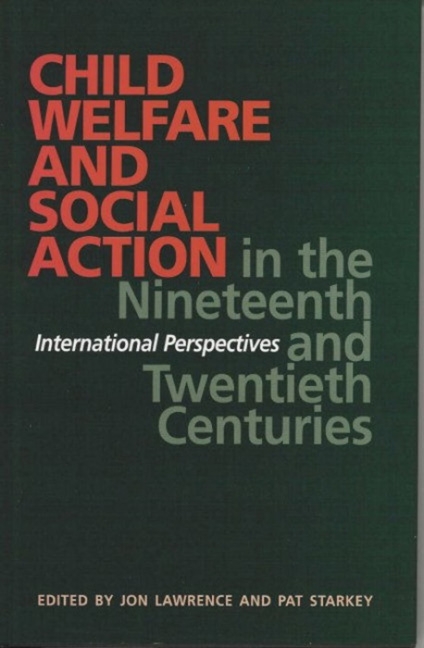Book contents
- Frontmatter
- Contents
- Acknowledgements
- Introduction: Child Welfare and Social Action
- I Gender and ‘Delinquency’
- II Child Emigration
- III Rethinking Philanthropy
- IV ‘Welfare States’ and Child Welfare
- 10 ‘Fixing’ Mothers: Child Welfare and Compulsory Sterilisation in the American Midwest, 1925–1945
- 11 A Spirit of ‘Friendly Rivalry’? Voluntary Societies and the Formation of Post-War Child Welfare Legislation in Britain
- 12 Mental Incapacity, Ill-Health and Poverty: Family Failure in Post-War Britain
- Notes on Contributors
- Index
11 - A Spirit of ‘Friendly Rivalry’? Voluntary Societies and the Formation of Post-War Child Welfare Legislation in Britain
from IV - ‘Welfare States’ and Child Welfare
- Frontmatter
- Contents
- Acknowledgements
- Introduction: Child Welfare and Social Action
- I Gender and ‘Delinquency’
- II Child Emigration
- III Rethinking Philanthropy
- IV ‘Welfare States’ and Child Welfare
- 10 ‘Fixing’ Mothers: Child Welfare and Compulsory Sterilisation in the American Midwest, 1925–1945
- 11 A Spirit of ‘Friendly Rivalry’? Voluntary Societies and the Formation of Post-War Child Welfare Legislation in Britain
- 12 Mental Incapacity, Ill-Health and Poverty: Family Failure in Post-War Britain
- Notes on Contributors
- Index
Summary
In recent years, historians have paid increasing attention to the role of voluntarism in welfare policy. Attempts have been made to describe the relationship between the state and the voluntary sector and most of these descriptions are based on the concept of a ‘boundary’ between two separate spheres. This chapter argues that such a model is misleading and that the relationship between the state and voluntary sector has been (and is) far more fluid and dynamic than the concept of a ‘boundary’ would suggest. To illustrate the complexity of this relationship the role of two of Britain's largest voluntary children's charities, the National Children's Home (NCH) and Barnardo's, will be considered during the period 1944–53. This period is particularly significant because it is often seen as one of barrenness for the voluntary sector; indeed in many areas voluntary effort was completely superseded by the state. The period from 1945 to the 1970s has been described by Digby, Lowe and others as the period of the ‘classic welfare state’. During this period the voluntary societies have been described as being in the doldrums, or as the Wolfenden Committee commented, to be ‘marking time’. A study of voluntary child-care provision in this period questions this assumption.
Finlayson has described the relationship between the state and the voluntary sector as ‘a moving frontier’, and argues that historians studying welfare provision have tended to trace the progression from ‘“active citizen” to “active state” [which] overlooks the continuing presence of voluntarism’. While Finlayson acknowledges that by 1949 greater responsibility for welfare had shifted to the state, he argues that there was still a significant role for the voluntary sector to play. He outlined the choices for the voluntary societies in stark terms: either they converged with the state and benefited from the increased resources this would bring, or else they diverged, maintaining their independence but facing an uncertain financial future. However, children and child welfare have never been the concern of any one single agency, and this has meant that the sphere of child care represents the voluntary–state boundary at its most plastic. The choices facing voluntary children's societies were more complex than Finlayson suggests. Deakin has also noted that the effect of Labour's post-war welfare legislation was to ‘change the size and shape of the space within which the voluntary sector had to operate’.
- Type
- Chapter
- Information
- Publisher: Liverpool University PressPrint publication year: 2001



